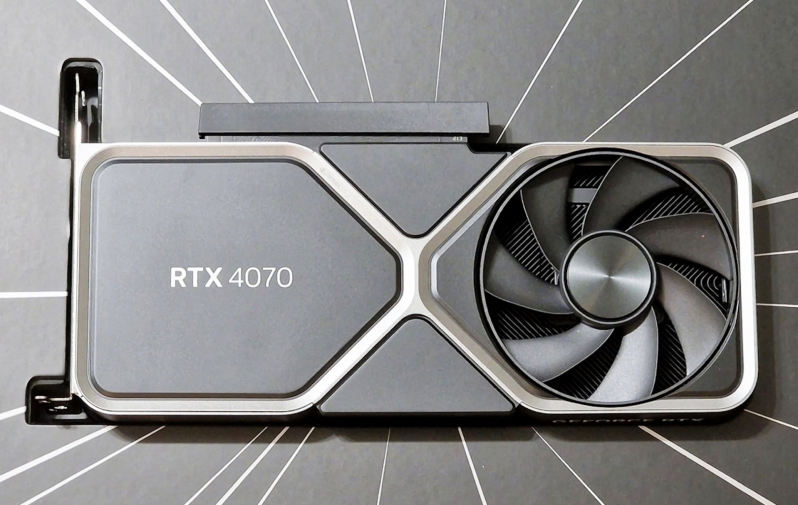Nvidia reportedly halting RTX 4070 shipments to partners amid low demand
RTX 4070 production is getting scaled back, but only temporarily
Today’s GPU market is a strange one, and that is mostly due to the current state of the global economy. Inflation is high, and there are many reasons for that, which has significantly reduced the spending power of most consumers. Understandably, people are economising where possible, especially when it comes to the purchase of luxury items, a product category that includes gaming GPUs.
Nvidia’s RTX 4070 launch did not go as well as expected, with most retailers selling RTX 4070 graphics cards at or below Nvidia’s RRP/MSRP two weeks after launch. It wasn’t long ago that all GPUs with Nvidia’s baseline pricing were sold within hours or minutes, revealing that demand for high cost GPUs is not what it once was.Â
According to Igor’s Lab, Nvidia will “stop supplying its board partners” with RTX 4070 silicon for the next few weeks, reducing the inventory of these chips within factories and within retail channels. Nvidia has not stopped producing RTX 4070 silicon, they are simply slowing their production.Â
The GPU Market’s Pricing Problem
Demand for high-end, flagship-level, products like Nvidia’s RTX 4090 remains strong, despite the graphics card’s huge £1,600 price tag. Simply put, the people who can afford this kind of product demand the best and have the money to make these kinds of purchases. If you can afford a graphics card like this, you are likely not hugely affected by the current state of the economy to hugely impact your spending habits. This is also part of the reason why RTX 4080 sales are poor when compared to the RTX 4070 Ti and RTX 4080, as it remains hugely expensive at over £1,150, but there are few consumers who can readily that level of pricing and cannot stretch themselves to purchase Nvidia’s RTX 4090.
It has also become clear that many areas of the GPU market are reacting to the changing global economy in different ways. The tech-savvy audience, who we will also call PC enthusiasts, who typically purchase components on launch day, are not buying PC components as readily as they once did. These customers are reluctant to purchase many newly launched graphics cards due to their perceived value proposition, and are easily swayed by concerns that a graphics card may not have enough VRAM, and likely already own a reasonably powerful graphics card (allowing them to wait for better pricing or competing products).
On the other hand, there are customers who decide to purchase a new graphics card (or full gaming system) with a set budget in mind and simply purchase the best product they see at that given price point. These are not the customers who purchase products at launch, and are also the customers who are more concerned with pricing than specifications, memory bus sizes, VRAM capacities. These customers are buying GPUs are normal, though often with tighter budgetary constraints given the current state of the economy.
As Igor’s Lab put it in their article on the subject, the GPU market is currently in a state of “extreme polarization”. Purchasers of ultra-expensive products like Nvidia’s RTX 4090 continue to purchase graphics cards as normal while customers who often opt for mid-range products are focusing more on the lower-end of the GPU product stack. One of the reasons why the RTX 4070 did not sell out on day-1 is that a lot of customers have moved their focus to the sub-$500 GPU pricing bracket.
With Nvidia’s Nvidia’s RTX 2070 Super and RTX 3070 launching with MSRP prices of $499, it makes sense that many people within Nvidia’s normal RTX XX70 target group are not interested in a more expensive product. These customers are now waiting for Nvidia to release a more inexpensive product, either their RTX 4060 Ti or RTX 4060.Â
With belts tightening for many consumers, a lot of customers are getting squeezed out of the $500+ GPU market, and those who can still afford products like this are often able to afford $800 components like the RTX 4070 Ti, or flagship level products like the RTX 4090. This leaves little room for a $600 GPU like the RTX 4070, especially when its value proposition is not significantly stronger than Nvidia’s last-generation RTX 3080, which had an MSRP of $650.
You can join the discussion on Nvidia reducing RTX 4070 shipments on the OC3D Forums.




